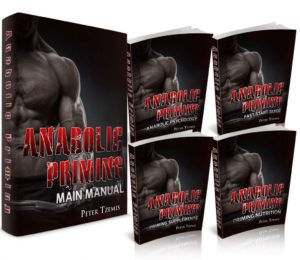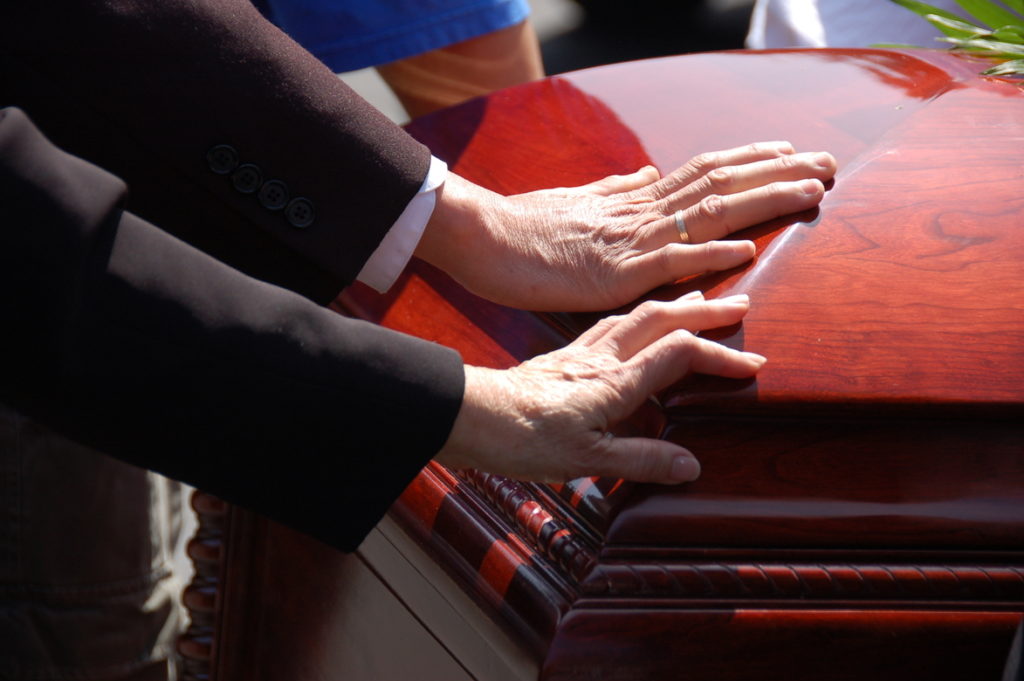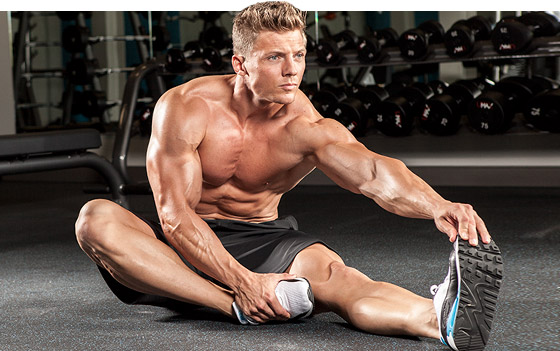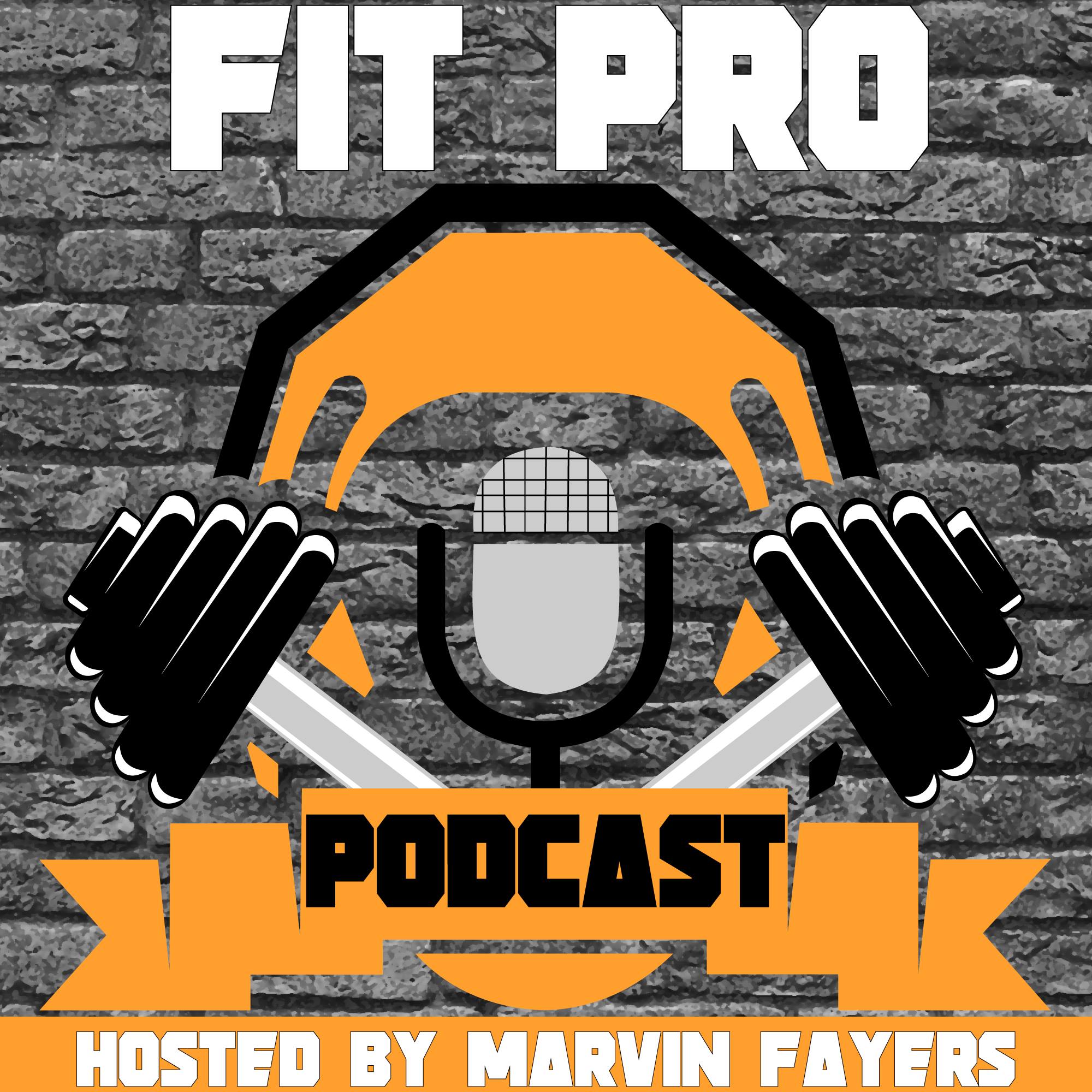Articles
FIRST TIME HERE?
READ THIS ARTICLES FIRST
FLASH BACK: It’s 7:12 a.m. and I just finished a killer dumbbell workout before school.
I’d only been seriously lifting for about 6 weeks and couldn’t believe the changes.
You know what I mean? Those first few weeks when you start where it seems like changes are dramatic?
I only had a few minutes left to toss my clothes on and head out but heck- I was so proud I got carried away flexing in front of the mirror scoping out those baby muscles.
Hey don’t judge- it happens to the best of us!
Suddenly, my friend who was sleeping over walked by and said something that’s stuck in my head (even to today):
“You look great! If you didn’t have such unlucky genes, you’d be able to look like that poster on your wall…”
Unlucky genes…
I was furious.
I spend hours a week training. I make sure I eat right. I even spend time reading and learning new ways to train and eat better.
Could all that really mean nothing because of my genetics?
If you think the answer is yes, you may not have heard of epigenetics.
Epigenetics all started with two mice.
In the year 2000 researcher Randy Jirtle took two mice that possess something called the agouti gene and did an experiment. Just so you know, the agouti gene is NOT something you’d want to have as a mouse- especially around swimsuit season.
Not only does the agouti gene predispose the mice to cancer and diabetes, but also it turns them a hideous yellow color.
As you can imagine, offspring of these agouti mice will possess the agouti gene BUT Jirtle made it so that the offspring of the parent agouti mice were slim and had brown hair.
It was as if Jirtle flipped a switch in the offspring to make the agouti gene disappear…
…So what happened?
Well, Jirtle took loving couples of mice carrying the agouti gene and split them into two groups:
One group was the control, they just had your run-of-the-mill mouse life.
The other group was fed a diet rich in methyl-donors. We’re talking beets, onions, garlic, and so on.
You see, these methyl donors ended up modifying the expression of the agouti genes in the baby mice.
Imagine that your DNA is a cookbook.
There’s the potential to whip up cancer, diabetes, or cardiovascular disease in there BUT what if you’re missing an ingredient for that recipe?
Exactly, you’ll have to make something else.
What researchers are discovering is that just because you have the DNA doesn’t mean that DNA will be expressed.
Another way to look at it is planting a seed in the soil but NOT giving it water, sunlight, and fertilizer.
Simply, right? How about we check out a few of my three favorite habits that can hack your genetics to help you look better, live longer, and have glowing health…
#1 Weight training
Even if you’re starting off skinny or weak you can still improve your strength with progressive resistance.
Genetically, you’ll have a tendency to develop muscles based towards power, endurance, or strength BUT with training you can actually modify this because your body will adapt to the stresses you place it under.
It turns out that this stress also has longer-reaching benefits into your health beyond from making you irresistible to the ladies and feeling like a badass in or out of your t-shirt.
For example, one study shows that exercise regulates methylation in your body. Yup, the same methylation that suppressed the agouti gene in those mice.
One recent study on breast cancer and exercise saw that 43 genes were changed due to methylation because of exercise. Three of those genes are directly correlated with breast cancer, showing that exercise can slow turn or “turn off” these cancer genes.
This S@#! works in humans too!
Similarly, exercise slows down the aging process.
A HUGE sign of aging is a lack of methylation. Your body gets a bit lazy and doesn’t regulate methylation as tightly as it used to, for some reason.
This is good news for you iron addicts though because exercise boosts methylation drastically reducing signs of aging. Not only will you look younger, you’ll actually feel and perform like you’re younger too…
… and all the ladies will appreciate that very much (trust me).
Plus, exercise increases the amount of GLUT-4 you make.
GLUT-4 is one of the proteins that takes insulin into your muscle cells with insulin. The more GLUT-4 you have the greater your insulin sensitivity. The end result? Exercise can reduce symptoms of- and even reverse- Type 2 Diabetes even if you’re genetically “destined” for it.
Did I mention all the benefits to fat loss and building muscle mass as well?
Dude, finish this article- then go hit the gym!
#2 Cold showers
Never tried one of these bad boys?
Change that today.
Turns out a cold shower isn’t just a fantastic way to boost your energy and your circulation. These little tests of will power also revamp with your genes.
To start, one study had 3,018 men and women take short cold showers for 30 days straight for 30-90 seconds of cold showering at a time (about 3 minutes total cold exposure per day). Over the next 90 days the cold shower group had a 29% reduction in sick days from work.
Crazy right?
That means a few minutes a day can actually buy you 29% more days of productivity.
But that’s not even the best!
Cold exposure is seen to boost testosterone levels too.
That means bigger and stronger muscle growth combined with faster recovery times.
It’s a win-win-win. And all it takes is 2-3 minutes of cold showering a day.
Does even the thought of taking a cold shower fill you with despair?
A cold shower may be exactly what you need because there’s even evidence that cold showers can lessen depression!
Try a cold shower out today by starting out slow and cycling periods of cold water and hot water.
#3 Intermittent fasting
You may already know about the rapid weight loss benefits of intermittent fasting BUT there are a few other benefits that switch on life-saving genes.
Research illustrates that when you fast intermittently (for 16-36 hours) your body increases in free radicals, just a little. This change is big enough to trigger your SIRT3 gene. The result?
Your body produces sirtuins, a type of protein that protects your body and increases your lifespan.
BOOM.
Not only will you be living longer, you’ll be living healthier too. With fasting there is a significant uptick in your insulin sensitivity. This means a much lower risk of type 2 diabetes AND you can get away with eating more ice cream without it spilling over into fat.
And what’s the point of living longer if you can’t have ice cream??
There’s one more massive improvement from fasting as well. Fasting is seen to increase levels of a protein known as BDNF.
BDNF works to make your brain larger and smarter so you can have greater memory, learn new skills quicker, and be smarter overall. Even better, research suggests there may be a protective effect of BDNF on your brain to prevent dementia.
The bottom line is It’s easy to take your health into your own hands with simple habit changes. I don’t want you to EVER be a victim to your genetics. Instead, take your life by the balls and swing your health, body, and mind in the direction YOU want to go.
REFERENCES
Buijze, G. A., Sierevelt, I. N., van der Heijden, B. C., Dijkgraaf, M. G., & Frings-Dresen, M. H. (2016). The Effect of Cold Showering on Health and Work: A Randomized Controlled Trial. PloS one, 11(9), e0161749.
Haigis, M. C., & Guarente, L. P. (2006). Mammalian sirtuins—emerging roles in physiology, aging, and calorie restriction. Genes & development, 20(21), 2913-2921.
Halberg, N., Henriksen, M., Söderhamn, N., Stallknecht, B., Ploug, T., Schjerling, P., & Dela, F. (2005). Effect of intermittent fasting and refeeding on insulin action in healthy men. Journal of Applied Physiology, 99(6), 2128-2136.
Katare, R. G., Kakinuma, Y., Arikawa, M., Yamasaki, F., & Sato, T. (2009). Chronic intermittent fasting improves the survival following large myocardial ischemia by activation of BDNF/VEGF/PI3K signaling pathway. Journal of molecular and cellular cardiology, 46(3), 405-412.
Ntanasis-Stathopoulos, J.; Tzanninis, J-G.; Philippou, A.; Koutsilieris, M. (June 2013). “Epigenetic regulation on gene expression induced by physical exercise”. J Musculoskelet Neuronal Interact. 13 (2): 133–46. PMID 23728100.
Pääkkönen, T., & Leppäluoto, J. (2002). Cold exposure and hormonal secretion: a review. International journal of circumpolar health, 61(3), 265-276.
Shevchuk, N. A. (2008). Adapted cold shower as a potential treatment for depression. Medical hypotheses, 70(5), 995-1001.
Zeng, H.; rwin, M. L.; Lu, L.; Risch, H.; Mayne, S.; Mu, L.; et al. (May 2012). “Physical activity and breast cancer survival: an epigenetic link through reduced methylation of a tumor suppressor gene: L3MBTL1”. Breast Cancer Res Treat. 133 (1): 127–35. PMID 21837478. doi:10.1007/s10549-011-1716-7.
Zhang, F. F.; Cardarelli R; Carroll J; Zhang S; Fulda KG; Gonzalez K; Vishwanatha JK; Morabia A; Santella RM (Mar 2011). “Physical activity and global genomic DNA methylation in a cancer-free population”. Epigenetics. 6 (3): 293–9. PMC 3092677 Freely accessible. PMID 21178401. doi:10.4161/epi.6.3.14378
Where do you stand on warming-up?
There’s a spectrum. On one end, there are the people who spend 30 minutes stretching and riding a bike preparing to lift weights and waste most of their time to train.
On the other end, there are the people who perform no warm up at all. They show up after 8 hours of sitting at a desk and start benching right way, fuelling a very bad storm to come.
Ever wake up dreading the idea of going to the gym, but after getting there, you end up having a great workout? You can thank your warm-up for that.
A perfect warm-up virtually ensures a perfect workout, but a poor one will almost certainly ruin what could have been a great training experience. It can even impair the performance in the main workout.
That being said not all warm ups are created equal. While doing a handful of stretches and a five minute bike ride might have cut it in high school, that time of primitive behaviour isn’t going to cut it anymore.
Nor is it going to maximize the anabolic response to get more out of every single rep.
When done correctly, anabolic priming will keep your body healthy, enhance your neural output, and allow you to reach levels of muscularity and strength you never thought possible in 1/3 of the time.
But if that doesn’t convince you, here are 3 more reasons to ditch the traditional warm up for anabolic priming.
You can thank me later 🙂
1. Priming Bulletproofs The Body And Prepares It For The Battle Ahead
The way you choose to warm up for an exercise can be the difference between packing on muscle or fizzling out.
Before heavy lifting, the average person hops on the elliptical for 10-15 minutes, then does several light sets of their strength exercise before piling on the heavy plates. They call that a “warm up.” And maybe that’s why they’re average.
It’s time you stopped warming up like a scrawny jogger for building muscle.
Doing a little light jogging isn’t going to cut it if you want to get fully prepared for an intense chest and back weightlifting session! Nor is it going to maximize the anabolic response to get more out of every single rep.
When done correctly, anabolic priming will keep your body healthy, enhance your neural output, and allow you to reach levels of muscularity and strength you never thought possible in 1/3 of the time.
2. Anabolic Priming Spikes Your Key Muscle Building Hormones By Up To 1700%
The hormone “spike ” induced from priming early in the routine creates a greatly boosted anabolic environment. Growth hormone (GH) is a big deal to lifters.
Get enough of it pumping through your veins and you cause fat cells to dump their cargo and muscle cells to explode with growth. No you can inject it, however it’s extremely expensive and it’s not nearly as potent as the natural kind.
Now there are many supplements claiming to increase growth hormone. Unfortunately many of those supplements are just pretty packaging.
The best way to boost GH? Lift weights.
However, anabolic priming does this in a specific way to increase GH levels by an amazing 1700% and marinate your muscles in a tsunami of GH.
Increases in testosterone (the other anabolic twin) will also boost strength levels via increased motor nerve activity which will in turn, allow for more exercise-induced muscle damage and muscle growth (ideal for “hard arm size gainers”).
3. Priming Unlocks Your Anabolic Advantage
The most important aspect of muscle growth is this: your internal environment.
Ask any pro and they would probably tell you that if they could provide the perfect environment in which their bodies could grow, their muscle building troubles would disappear.
Indeed, creating the appropriate environment (an anabolic environment) is the key to great gains. This is what Joe and I like to call unlocking your “Anabolic advantage”.
Anabolic Priming techniques we’re formulated to release maximum testosterone, growth hormone and ensure everything is in place to crush every single workout session.
The Bottom Line…
Your hormones are the biggest dictator of how much muscle you can build. how well you perform and how good you look and feel. Anabolic priming takes care of you form the inside out.
Anabolic Priming is a cutting-edge and scientifically-proven system that unleashes floods of anabolic hormones in your body, creating the prefect environment for more muscle, better recovery and more strength. It also prepares and activates your muscles, joints, nervous system, and even your psychology and mind, for any type of workout you are about to do.
If you are ready for the full, badass program, check it out below while it’s on sale for 90% OFF (until copies run out). You won’t be dissapointed.
>> Anabolic Priming 90% Off (while copies last)
“If you always put limit on everything you do, physical or anything else. It will spread into your work and into your life. There are no limits. There are only plateaus, and you must not stay there, you must go beyond them.” – Bruce Lee
I remember sitting on the bus a few years ago when this man the size of hippopotamus waddles on board. His size, to say the least, was impressive.
The scary part was that he had two bags full of Mcdonald’s goodies. In the 15 minutes that ensued until I got off at my stop, he managed to devour two big Macs, a large fries, a large coke, ten nuggets and two pies (which I believe were both apples).
Walking home after getting off, I remember asking myself:
“How can he rationalize eating so much? He takes up two seats, can barely walk and his XXXL clothes looked a tad too tight.”
The answer?
He can’t. Just like I can’t rationalize getting up extra early on Saturdays to play four hours of video games (not so much anymore, thankfully) when I should be working on my business.
Human nature sucks. We break commitments to ourselves, almost as much as we break bread.
Why?
Because logic fails.
Thankfully ten decades of psychology has taught us that we can make success automatic by reverse engineering what would make us stray in the first place.
Here are three bulletproof tips to ensure you achieve success in any are of your life!
 1. Reverse betting
1. Reverse betting
Introduced to me by my friend Mike Vacanti, the reverse bet is exactly what it seems. You set a goal and bet a consequence to losing if you don’t achieve said goal on time/to the caliber you originally outlined. Hence why it’s a reverse bet, instead of winning, you lose; well not really since you are achieving your goals – but you get the point.
Mike Vacanti reverse bets his entire net worth. Obviously, that’s slightly insane, so for us, normal folk here’s what you can do.
Take some money you would hate to part with. It should be an uncomfortable amount. Then set a goal, and the consequence is that you throw that amount of money out the window.
That should light a fire under your ass.
2. Photo Mounting and Journaling
This has more to do with daily reminders than anything else. A significant barrier to achieving goals is forgetfulness; more specifically that we forget about them soon after we set them.
The first few days, inspiration is sky high. But then something happens, results don’t happen as quickly as we thought, progress slows and motivation wavers. Our once attainable goal now seems like a far away mission. Most give up and end up right where they started.
The solution? Consistent reminders and check in’s
When I finally successfully transformed my body and kept it there, it was because I carried around a fat photo of myself in my pocket on a daily basis. Furthermore, I had one mounted in my room to remind me every morning and every night.
Whenever I would have the urge to cheat on my diet or skip the gym, there was the photo, reminding me of who I am and where I need to go. Transforming and staying fit, became effortless.
The other tactic I used was daily journaling. In the morning I would write out my goals, by hand. This served as a reminder and set up the rest of the day to be aligned with said goal.
At night was where the magic happened. I would simply do a daily check in regarding my goal. How was my diet that day? Did I go to the gym? What could I have done better? What did I do amazing today?
The mere thought of having to write down I cheated on my diet, or I skipped the gym was enough for me not to do those things.
3. Kaizen
Kaizen is a Japanese term and means small daily improvements.
You aren’t going to get huge and shredded overnight.
You aren’t going to make a million dollars overnight, and you certainly aren’t going to find the person of your dreams overnight. It happens, little by little over time.
1% better every single day is the goal. I promise if you commit to small daily improvements, you will achieve anything you set your mind too.
It’s 2 am, on a crisp, now Wednesday, morning. Chills creep down my spine, and a single tear rolls down my cheek as I realize it’s time. It’s time to move the body. Tonight wasn’t supposed to end like this…but is any night supposed to end in the death of a loved one?
Death is funny a thing. It’s something we can all relate too. It’s something that no matter how hard we try, will always be in the back of our minds. But, it’s also the thing that makes life worth living for.
My uncle was like a second father to me. Having no kids of his own, my siblings and I were his children. He was at every birthday, every graduation and every single hockey game that I played.
As I help carry the body of my deceased uncle out of his basement, a wave of overwhelming emotion hits me, hard. I double over ready to puke, but right before, I see my father, longing for his dead brother; knowing he will never see him, touch him or talk to him again. I see my sister and horrible flash takes me to the future… is this how it will be for her and I.
I take a deep breath and muster the courage to continue moving the body. I can’t stop now. My father needs me. We load the body into the funeral home van, thank everyone for their help and go our separate ways.
This article is not meant to gather sympathy. Rather I wrote it to be a leg of support for anyone who will inevitably go through the same thing, to lean on, with the simple message: it will be ok.
Understanding Grief
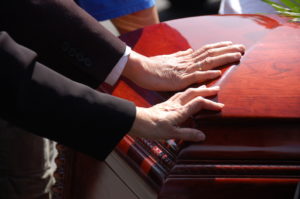
Grief is a natural response. It helps us cope and heal when the connection with a loved one, has been irreversibly severed. It is beyond painful, but it is also necessary.
In 1969, psychiatrist Elisabeth Kübler-Ross introduced to the world, the “five stages of grief.”
1. Denial
2. Anger
3. Bargaining
4. Depression
5. Acceptance
And although these are common responses to loss (especially when it’s a loved one) there is no time line or structure to move through these processes. Besides, you may not even go through all these stages linearly, but rather jump around as I did.
Kübler-Ross never intended for these stages to be a rigid framework for everyone experiencing grief. Before her death in 2004, she said this regarding the issue:
“They were never meant to help tuck messy emotions into neat packages. They are responses to loss that many people have, but there is not a typical response to loss, as there is no typical loss. Our grieving is as individual as our lives.” (1)
Some people will withdraw into a deep corner, isolating themselves from the world. Others will throw themselves into work, take drugs or overcompensate for distraction. And others will simply cry until there isn’t a single tear left to shed.
Please know that there is no “right” way to grieve and that you don’t have to get back to “normal” – that will never happen, and it’s a blessing. It wasn’t until I realized that I was never supposed to go back to “normal,” that I took back control of my life.
The way you feel at the time is the right way for you to feel. Life and death are a personal journey. You’re allowed to do whatever it is that you need to heal.
Suppressing your feelings and being “tough” or “strong” is a dangerous game to play; it builds an unstable emotional dungeon, ready to collapse at any moment. When you allow yourself to be open and be vulnerable, you allow the grieving process to do its job: Healing you.
Living in the moment, even when it sucks

If you’ve read any personal development, it’s continuously preached that living in the present is a fundamental component to success and happiness. But what do we do when the moment sucks? How do we live in the moment when we are doing all we can to stay afloat, from the waterfall of depression crashing down on us?
You learn to sit in the pain, accepting it without judgment.
Without this, you start playing the “what if” game. What if I was there 10 minutes, before his heart attack? What if I spent more time talking with him and helping him/her? What if I called more, loved more and on and on. Once you let that game in, it consumes you.
Instead of sleeping at night, you are wide awake thinking of million possibilities; convinced that if you did this or that you could somehow bring that person back.
Living in the moment when it sucks, allows you to avoid this never-ending wormhole.
When you resist the tidal wave of emotions from death, they build up into a terrifying tsunami, that will eventually come crashing down on you.
The first days (and weeks) after my uncle’s sudden passing, I allowed myself to succumb to the overwhelming misery; yet at the same time, I took action. Rather than ignoring the pain, I experienced it, completely and responded to it. I listened and gave it an identity. I let it consume me, not fighting or resisting, but watching, observing and learning from it.
I allowed myself to break into tears without judgment spontaneously. I lived in the moment, even when that moment was raw, unfiltered misery. The tears eventually slowed… and the despair evaporated; by allowing pain to have its moment, its moment passed.
Sadness allows for the roots of joy to take hold and flourish.
I stopped shedding tears because it’s over and instead, started cracking smiles because it happened. In remembering who he was and what he meant to me, I found myself appreciating the time we had, and honoring that.
Forgiveness

Time doesn’t heal all. Spending my days playing video games and binge watching Netflix didn’t do a damn thing for me. It didn’t make the time go by faster or help me forget. Instead, it made each day seem more and more meaningless. Spending your time avoiding the pain is only pushing back the healing process. Time well spent, on the other hand, starts the healing process.
And the greatest way to spend time when dealing with loss? Basking in Forgiveness.
Forgiveness is vital in letting go and moving forward. Not only forgiving others but also forgiving yourself. Forgiving yourself of all the guilt you are keeping locked in a cage for your loved one.
When my uncle passed, I felt responsible for every mishap in my head and for all the times I didn’t tell him I loved him or hugged him.
In forgiving, I freed myself and my life of anger, betrayal and hurt. This made room for peace and love to take root and enter my heart.
If you’re dealing with the loss of someone you love, practice your presence each day and become aware of the thoughts coming filtering through your mind. Allow yourself to be sad, angry and hurt but more importantly, allow yourself to be happy. Forgiveness is the real gift you can give back to your loved one who is gone and to those still with you.
Going forward doesn’t mean forgetting. Enjoying life again doesn’t imply that the person is no longer missed or somehow forgotten. It simply means that grief has run its course. Period.
There will always be a crater where my uncle once stood. By learning to embrace the awful moments in the present—the sad moments, the inevitable times when I remember I will never see him at another hockey game or a family dinner—I have learned that they, like everything, are not permanent. They are moments to be celebrated because they happened. And finally, that embracing the present moment even when it sucks the most, is the only way to truly, live.

TZEMIS, Andy —July 15, 1948 – February 21, 2017
Born in Athens, Greece on July 15, 1948, Andy came to Canada with my grandmother in 1958, one year after his father had arrived.
Following his graduation from Sir Wilfred Laurier University, Andy pursued a career in sales and advertising working with CFNY and CFMT. He had an outgoing and sincere personality that you couldn’t help but love. Always quick with a smile and a kind word, Andy made everyone around him feel better. He was and will always be the life of the party.
His involvement with AHEPA was his hobby and his passion. He spent most of his life supporting the community work that AHEPA was involved in which included volunteering as a big brother. Being an avid sportsman, nothing was more precious to Andy than to watch his niece and three nephews play in their various sporting events. Always with a post game encouraging word and thought, uncle Andy was their premiere fan.
My uncle was loved by so many great and caring friends and adoring family that I know his presence will be missed tremendously.
The single most wonderful characteristic about Andy was that no matter what, he was always there for his family and friends. His unselfish words “what do you need man?” will forever live in our thoughts. Now, with our prayers, we are all here for him.
May God Rest your Soul and may Eternal be your memory.
(1) “Coping with Grief & Loss.” N.p., n.d. Web. 26 Feb. 2017 <https://www.ucdmc.ucdavis.edu/hr/hrdepts/asap/Documents/Coping_with_Grief.pdf>.
If we’re being completely honest, stretching is about as much fun as visiting a drunk dentist in a third world country.
However, unlike visiting that dentist, it’s a necessary component for everyone trying to look, feel and perform their best in and out of the gym.
However, it’s often ignored and brushed off by many as something that’s just not important. Who has time to sit there and relax? You could be hitting supersets of bicep curls while balancing on a Bosu ball with one leg instead.
One thing you probably didn’t realize is that stretching, specifically anabolic stretching, can dramatically speed up muscle growth, strength, and recovery. In this article, I’m going to outline the main problem with “traditional” stretching and eight ways anabolic stretching can bring your body to the next level.
The BIG Problem With Traditional Stretching

The main problem with conventional stretching programs is that they often work against your body’s physiology rather than with it.
If you take a tight, cold muscle and expose it to prolonged “standard” stretching, you could incur scar tissue and micro-tearing, which could then lead to muscle weakness, inflexibility, and injury.
Furthermore, many professionals have prescribed stretching before exercise as a form of warm up. This is wrong.
A study published in The Journal of Strength and Conditioning Research concluded that if you stretch before you lift weights, you could find yourself weaker and “off balanced” in your workouts. Not something we want when hoisting hundreds of pounds of metal.
Instead, the ideal time to stretch for overall health, performance and increasing muscle mass is right after your workout. At this point, the connective tissues are already being stretched from the blood volume in the muscles.
By manually stretching the muscles post workout, you get a double whammy effect; dramatically increasing the muscle fibers growth potential. And if you include some anabolic stretching, your results will 10x. Here are 8 More reasons to stretch:
1. It flips the muscle building switch to ON
Anabolic stretching activates mTOR. The more mTOR is activated, the greater protein synthesis will be.
2. It creates an occlusion effect.
Anabolic stretching lasting 45+ seconds will create an oxygen deprived environment in the stretched muscle. As a result, lactate will build up initiating the release of super anabolic, IGF-1 inside the muscle. The more IGF-1 released, the more killer muscle you’ll build.
3. It increases IGF-1 sensitivity.
More IGF-1 is not better if your body isn’t responding well to it. By following anabolic stretching protocols, you will increase the sensitivity of the IGF-1 receptors dramatically; making the anabolic response even greater.
4. It causes intramuscular hyperthermia
After you release the anabolic stretch, there will be a surge of blood flow into the muscles. This phenomenon is known as intramuscular hyperthermia. If your blood contains adequate nutrients via proper post, peri, and pre-workout nutrition, you’ll dramatically increase the facilitation of muscle recovery and growth.
5. It fatigues the muscles, stimulating more growth and power.
Since you’re using the muscles to perform the anabolic stretch, you’ll start to fatigue them from the intensity of the stretch. Fatiguing a muscle is a direct precursor to stimulating muscle growth.
6. Anabolic stretching transfers over to your workout.
Flexibility does not equal mobility. Many strong athletes are rigid, and many flexible users are weak. With anabolic stretching, you’ll be building strength while becoming more flexible.
Furthermore, unlike standard stretching, you’ll not only improve the parallel elastic component (PEC) of the muscle, but also the series elastic components (SEC). AS improves dynamic mobility and are much more transferable to movement performance.
7. Anabolic stretching bulletproofs your muscles from tearing
Tears and pulls happen when a muscle is violently stretched. Following AS protocols will help prepare the muscle to deal with something like this, making it almost bulletproof to injury.
8. AS strengthens your tendons
The majority of lifters hit a plateau and can’t get stronger because their tendons are weak. AS techniques strengthen tendons to overcome this problem.
Next Steps
Get it straight. The actual time commitment to doing these anabolic stretches is minimal – 5-10 minutes at most following a weight training session.
Grab some light weights and hold the stretch for 30-60s to unleash a flood of anabolic hormones. My favorite is the anabolic pec fly stretch.
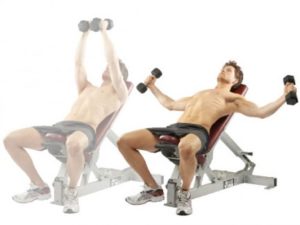
It’s a surefire way to force the body to supercharge your muscle gaining potential, double recovery and see noticeable improvements in your muscle fullness and separation within the next 6-8 weeks.
Yeah, it’s still going hurt, but this time you’ll have a ton of extra head turning muscle to show for it!
If you are ready for the next level and detailed plan to supercharge testosterone and muscle growth by 318%, pick up the Anabolic Stretching Program For Just $9 during its pre-release discount!
It’s no secret that all the greats, had a morning routine to fuel their success. Alexander the great Michael Jordan Ernest Hemmingway And now it’s your turn. It has taken me 5 years to filter through all the…
What if I told you there was a way you’ll never have to market a day in your life and have a highly profitable and successful business. Would you do it? I bet, you won’t. Today I’m going…
If we never fail, we don’t know the value of succeeding. If we never experience heartbreak, we don’t know the value of true love. If we never lose a loved one, we don’t know the value of relationships.…
The butterfly effect is a scientific theory. I know what you’re thinking. You’re wrong. This isn’t some washed up, fluffy theory, that has been chewed up and spit out by the fitness world. This isn’t “the secret.” And…
Fasted training has a myriad of health benefits. The greatest however is accelerated fat mobilization. Research shows that blood flow in the abdominal region is increased when you’re in a fasted state, which helps you burn the “stubborn”…



